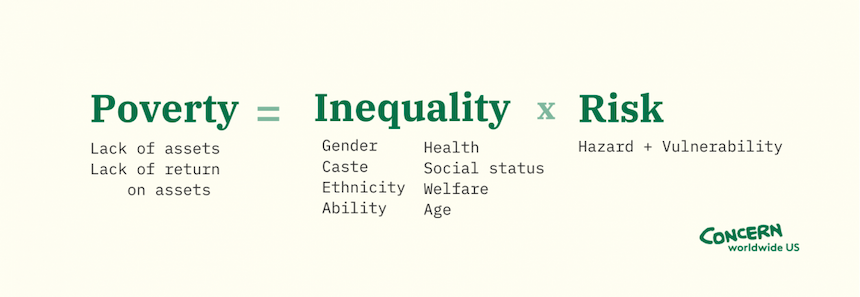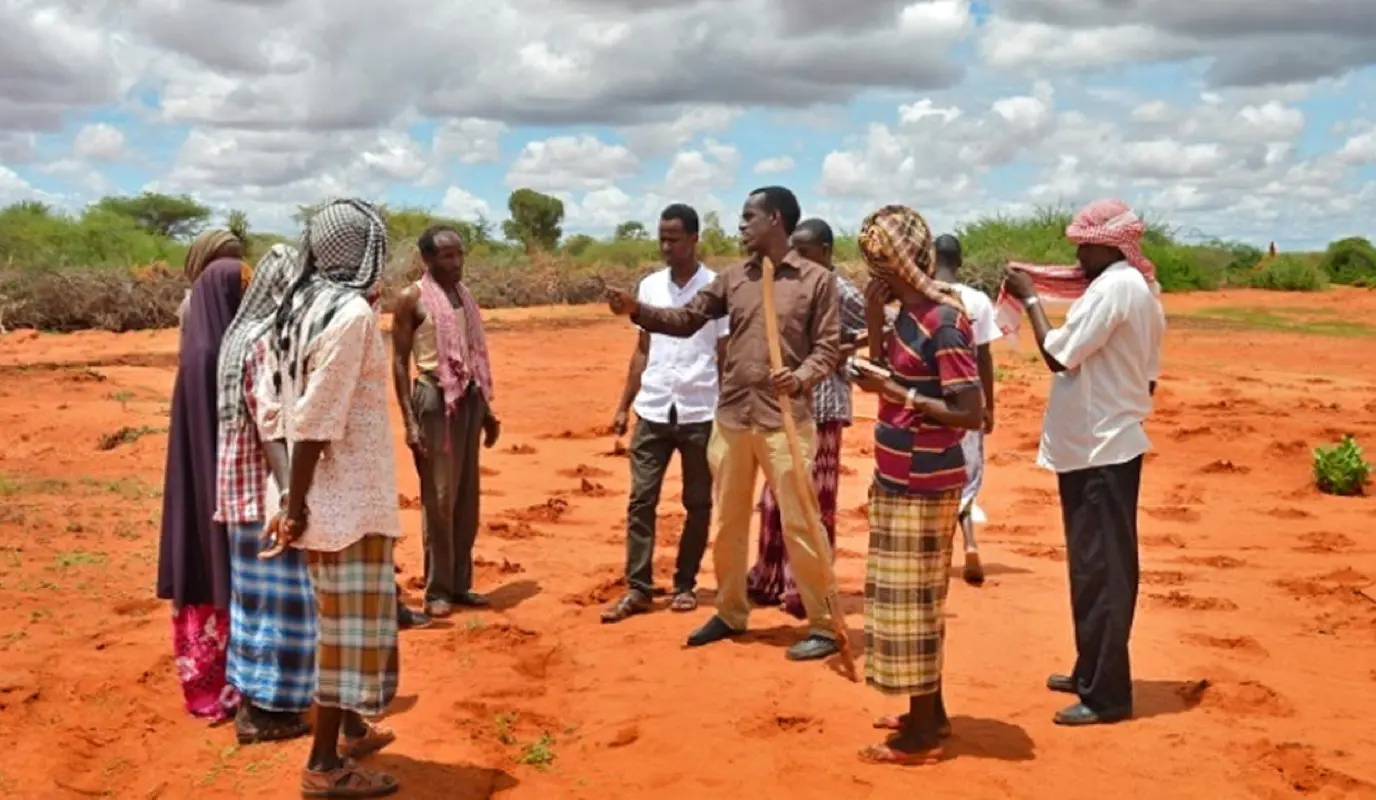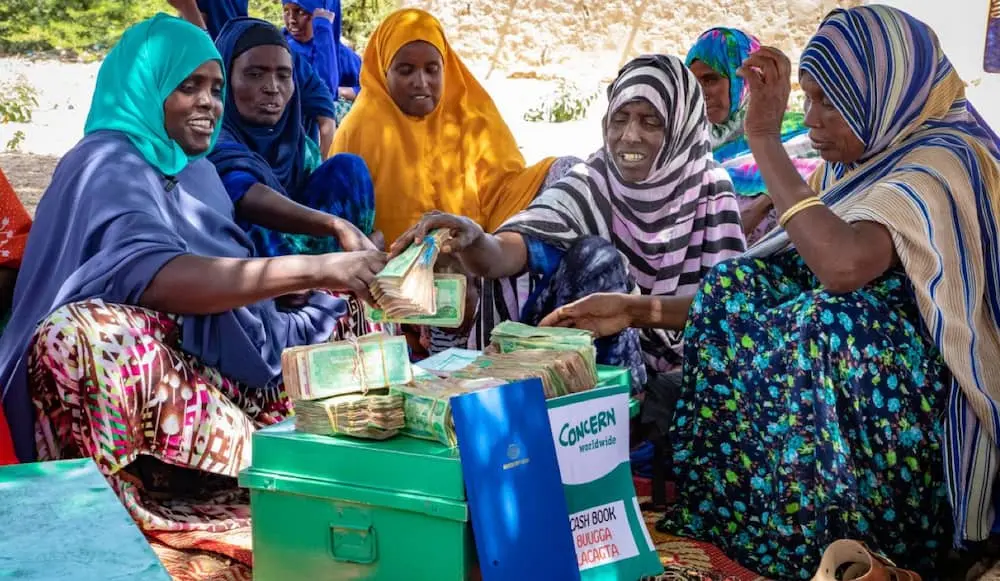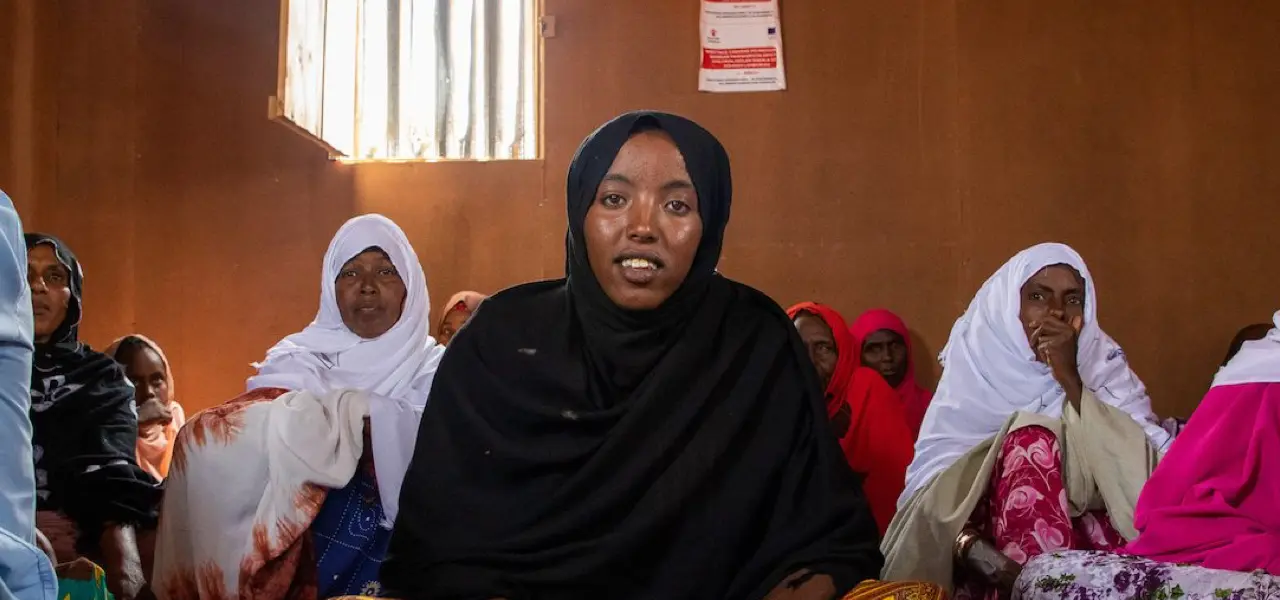The Challenge
Over half of Somalia relies on farming and livestock for income and food. However, more than a decade of drought led to catastrophic crop failure, livestock loss, and a diminished ability to cope.
The country also faces man-made challenges, especially around political instability and insecurity. Many Somalis live in internal displacement camps, displaced by climate or conflict — or both. All this led to a deadly famine in 2010-12. During this famine, international action and donor funds were slow to arrive. Estimates suggest that this delay was responsible for the deaths of 260,000 people.
Traditional aid models have, often by necessity, relied on certainty. But in emergency contexts, this doesn't always work: delays in international action and donor funds cost lives.
The Solution: From Risk to Resilience
Inequality multiplied by risk equals poverty. We need to address both risk and inequality to flatten the curve of extreme poverty. When more people live above the poverty line, their abilities to cope with major shocks and day-to-day stresses also improve. We need to build resilience.

In 2021, “resilience” has taken on a different meaning outside of humanitarian work. In this case, we define resilience as the ability of people, communities, and countries to mitigate, adapt to, and recover from shocks and stresses. Moreover, they are able to do this in a way that reduces vulnerability and encourages inclusive growth.
Building Resilient Communities in Somalia (BRCiS) is based on this definition and mindset. Working in the country for 35 years, Concern has developed a program that works with communities to build resilience and equity. The finish line: breaking the cycle of poverty.
Our No Regrets Approach: Early Warning, Early Action
Traditional aid models have, often by necessity, relied on certainty. But in emergency contexts, this doesn’t always work. As we saw with the 2010-12 famine, waiting for the full picture of need and risk to develop wasted precious lead-time. Somalis paid the ultimate price.
Breaking with tradition, we created an approach to emergencies called Early Warning, Early Action (EWEA). This “no regrets” strategy forms the foundation of BRCiS. Instead of responding to an emergency based on certainty, we began responding (proportionately) to the probability of a disaster. In some cases, this meant that we responded early to the signs of a crisis that didn’t come to pass. But, in the long term, EWEA still saves money: An ounce of prevention is worth a pound of cure.
Early warning, early action: instead of responding to an emergency based on certainty, we began responding (proportionately) to the probability of a disaster.
BRCiS Phase One: Community-Centered Early Action
Concern ran Phase One of BRCiS from 2013 to 2018. During that time, we introduced EWEA where it would have the greatest impact.
We began with our local team identifying “red flag” communities. These were communities that had experienced one large shock, such as one season of poor rainfall. Another shock would have a compound affect in these areas. We then spoke with the people in these communities to understand what they felt were their biggest risks. Often these went against what we would have assumed their greatest risks to be. This was important, both for making the right plans, and for giving communities a sense of ownership over those plans.
Participatory risk assessments also allowed us to come up with better solutions once we knew the exact challenges and what had already been done. With these assessments in place, we monitored early warning signs of emergencies. Following a warning sign, we designed and prepared specific contingency plans. As emergencies came and went, we responded effectively and rapidly.

The Famine That Wasn't
In 2016, BRCiS was put to the test when the rainy season from April to June was below average.
The BRCiS team identified the areas that were most affected by these rain shortages. We then narrowed focus to areas recently affected by other climate shocks and conflict. We went to work in the communities that seemed most vulnerable due to overlapping risk factors. By November, we had expanded our area of coverage.
In January of 2017, Somalia’s leading source on food security indicated the possibility of a famine. By that time, BRCiS had already been active for seven months in half of its target communities, responding to the early warning signs. This is one of the factors that led to Somalia avoiding a nationally-declared famine.
Early warning, early action helped Somalia to dodge a famine in 2017.
BRCiS Phase Two: Community Engagement & Learning
Phase Two of Building Resilient Communities in Somalia launched in 2018. It will continue through 2022, and builds on Phase One with community engagement and learning.
Communities in Somalia participating in the program have taken on greater ownership of the projects. Community Resilience Committees co-manage the projects with BRCiS Consortium members. They also co-lead local action plans, from design to monitoring results, and contribute to projects with cash and in-kind goods.
By design, BRCiS has always focused on the most vulnerable and marginalized people, groups, and communities. Our work in Phase Two goes further towards equity, transforming cultural structures and social institutions that foster inequality. BRCiS launched women’s support groups in Somalia to counter gender inequity. With some training and seed money, women in these groups pool resources into savings that create a valuable safety net. They loan the cash to one another as needed, gaining economic autonomy in the process.



